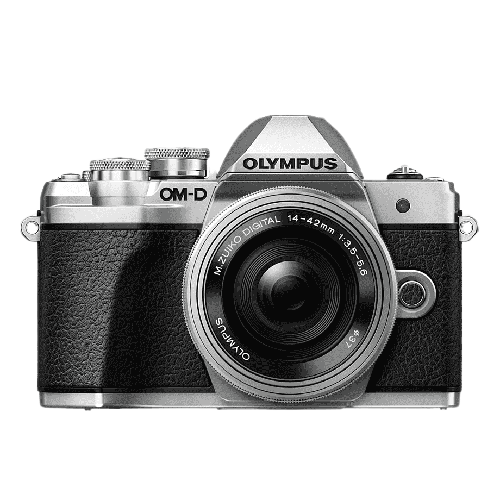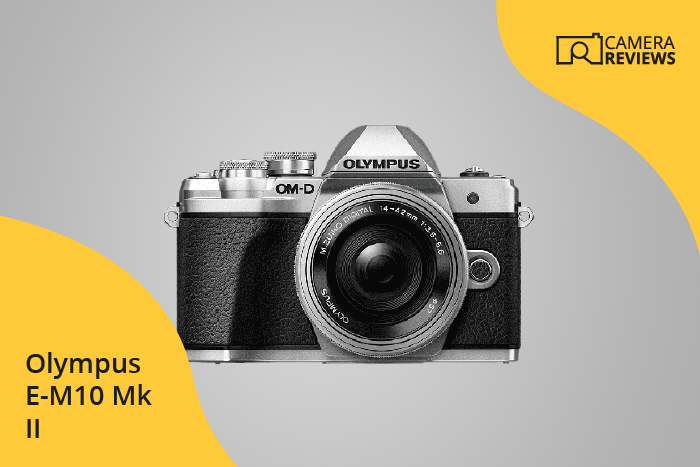Olympus OM-D E-M10 Mark II Specs and Scores

The Olympus OM-D E-M10 Mark II earns a score of 54/100 in our evaluation. Launched in 2015, this mirrorless camera has a launch price of $650. It measures 120 x 83 x 47mm and weighs 390g, or 0.86lbs. Despite being released over six years ago, the E-M10 Mark II still holds its own in the current market. It offers reliable performance and decent specifications for its age, making it a worthwhile consideration for those seeking an affordable and compact camera option.
Olympus OM-D E-M10 Mark II Overview and Optics
The Olympus OM-D E-M10 Mark II receives a score of 57/100 for its optics. This camera features a 16.1-megapixel CMOS sensor combined with a TruePic VII processor, delivering good image quality. The Micro Four Thirds sensor size is smaller than that of full-frame cameras, but still provides adequate performance for most photography needs.
With a shooting speed of 8 frames per second and a DXOMARK score of 73 for the sensor, the E-M10 Mark II competes well in the market. The Micro 4/3 lens mount offers a wide range of compatible lenses, while the built-in image stabilization helps to reduce camera shake and improve image sharpness. The camera’s aspect ratio is 4:3, which is suitable for various photography types.
Despite not being the top performer in today’s market, the Olympus OM-D E-M10 Mark II’s optics provide a solid foundation for capturing quality images. Its specifications cater to the needs of both amateur and professional photographers alike.
Olympus OM-D E-M10 Mark II Video Performance
The Olympus OM-D E-M10 Mark II receives a video score of 70 out of 100. The camera has a maximum video resolution of Full HD (1920 x 1080) and can shoot at a frame rate of 60fps. This offers smooth and high-quality video recording for various purposes. Additionally, the camera includes a built-in time-lapse functionality, which enables users to create stunning time-lapse sequences with ease.
Despite its decent video capabilities, the OM-D E-M10 Mark II faces strong competition in today’s market, where 4K video resolution is becoming a standard feature. However, the camera’s Full HD resolution and 60fps frame rate still provide satisfactory performance for casual videographers and those not requiring ultra-high-definition footage. The built-in time-lapse feature adds value to the camera’s video capabilities, making it a suitable option for those interested in capturing dynamic scenes over time.
Olympus OM-D E-M10 Mark II Features and Benefits
The Olympus OM-D E-M10 Mark II earns a feature score of 57 out of 100. With a 3-inch touchscreen and a screen resolution of 1040000 dots, this camera offers user-friendly navigation and clear image previews. Additionally, the flip screen provides flexibility for capturing images at various angles.
Despite lacking GPS and Bluetooth capabilities, the E-M10 Mark II compensates with built-in Wi-Fi, making it easy to share and transfer images. In today’s market, these features are essential for photographers who require seamless connectivity and convenience.
The E-M10 Mark II’s features, while not groundbreaking, provide a solid foundation for photographers who seek a reliable and user-friendly camera. Its score of 57 out of 100 reflects its position as a decent option for those prioritizing functionality and ease of use.
Olympus OM-D E-M10 Mark II Storage and Battery
The Olympus OM-D E-M10 Mark II scores 21/100 in storage and battery. The camera has one memory card slot, accepting SD, SDHC, and SDXC cards. In today’s market, multiple memory card slots are preferred for added storage and backup options, which the E-M10 Mark II lacks.
The battery life of the E-M10 Mark II is 320 shots, powered by a BLS-50 battery. This battery life is relatively low compared to competitors. Additionally, the camera does not offer USB charging, making it less convenient for on-the-go users.
Considering these factors, the Olympus OM-D E-M10 Mark II’s storage and battery specifications fall short in comparison to other cameras in today’s market.
Olympus OM-D E-M10 Mark II Alternatives
Do you want to know how the Olympus OM-D E-M10 Mark II compares to its competitors? Have a look at the most popular comparisons for this camera below:
- Olympus OM-D E-M10 Mark II vs OM-D E-M5 Mark II
- Olympus OM-D E-M1 Mark II vs OM-D E-M10 Mark II
- Canon EOS M3 vs Olympus OM-D E-M10 Mark II
- Fujifilm X-T20 vs Olympus OM-D E-M10 Mark II
- Canon EOS Rebel T7 / 2000D vs Olympus OM-D E-M10 Mark II
- Olympus OM-D E-M10 Mark II vs OM-D E-M10 Mark III
Olympus OM-D E-M10 Mark II FAQ
Does the Olympus OM-D E-M10 Mark II Have Built-in Image Stabilization?
Yes, the Olympus OM-D E-M10 Mark II features a 5-axis in-body image stabilization system, which helps reduce camera shake and improve image sharpness in various shooting conditions.
Does the Olympus OM-D E-M10 Mark II Support 4K Video Recording?
No, the Olympus OM-D E-M10 Mark II does not support 4K video recording. The maximum video resolution it offers is Full HD 1080p at 60fps.
What Size Sensor Does The Olympus OM-D E-M10 Mark II Have?
The Olympus OM-D E-M10 Mark II is equipped with a Micro Four Thirds sensor, which is smaller than APS-C sensors but larger than compact camera sensors, offering a balance between image quality and portability.
Does the Olympus OM-D E-M10 Mark II Have a Dual Memory Card Slot?
No, the Olympus OM-D E-M10 Mark II features a single memory card slot, which supports SD, SDHC, and SDXC cards for storing photos and videos.
Does the Olympus OM-D E-M10 Mark II Have a Touch Screen?
Yes, the Olympus OM-D E-M10 Mark II has a 3-inch tilting touchscreen LCD, which allows for easy menu navigation, image playback, and touch focus control.
Does the Olympus OM-D E-M10 Mark II Have Wi-Fi and Bluetooth?
The Olympus OM-D E-M10 Mark II has built-in Wi-Fi for wireless image transfer and remote control, but it does not have Bluetooth connectivity.
Does the Olympus OM-D E-M10 Mark II Have GPS?
No, the Olympus OM-D E-M10 Mark II does not have a built-in GPS module for geotagging images. You can, however, use the Olympus Image Share app to sync location data from your smartphone.
Is the Olympus OM-D E-M10 Mark II Weather Sealed?
No, the Olympus OM-D E-M10 Mark II is not weather sealed, so extra precautions should be taken when using it in adverse weather conditions or dusty environments.
Does the Olympus OM-D E-M10 Mark II Have a Built-in Flash?
Yes, the Olympus OM-D E-M10 Mark II has a built-in pop-up flash for additional illumination in low-light situations or for creative effects.

